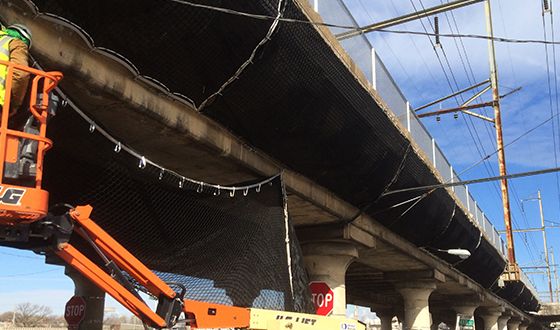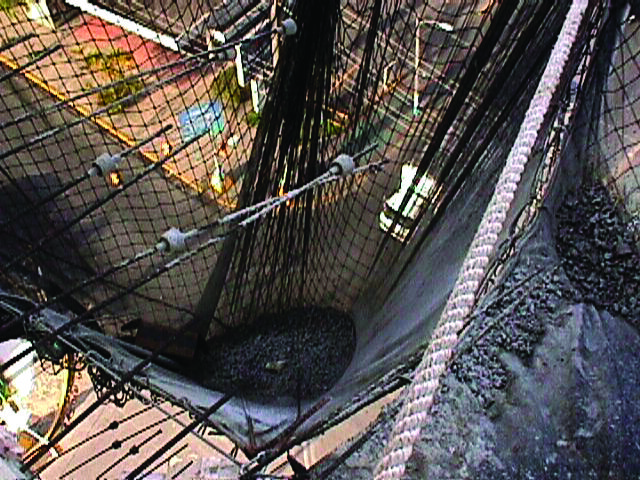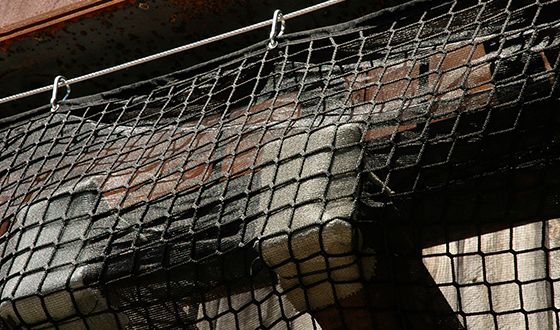Which Safety Netting Type is Right for Your Construction Site?
May 2021
Safety netting serves a critical function on construction sites – protecting workers, property, equipment, and anyone or anything in the immediate vicinity. Netting comes in various material types designed to cover specific applications. For example, you might only be looking to catch debris. No problem. But is it light? Heavy? That matters. In other cases, you could be looking to retain something in place. How heavy? If you’re concerned about people falling, that solution is in a class of its own.
There are four primary classifications of construction netting as follows:
Light debris – includes smaller, lightweight items such as coffee cups, pens, pencils, etc. For this application, PVC-coated polyester is used. You’ll need a finer mesh size to catch these smaller items, typically 1/8” x 3/16”. The breaking strength (per ASTMD D5034), 1” grab, is 179 lbf (length) and 94 lbf (width). This type of netting is ideal for barriers, debris containment systems, and scaffold enclosures. 
Medium-duty debris/objects – This includes tools, hardware, and debris. Knit polyester is standardly applied here, with a larger mesh size, such as 3/8” x 1/2”. Breaking strength (per ASTMD D5034) is 107 PSI (Warp), 65 PSI (Fill). This style of netting can also be used as barrier netting.

Larger, heavier debris/objects – brick, concrete, cornice chunks, stacked material. We have found that the best protection is provided by using a two-ply netting system. It consists of a 2” structural net underlay and a 3/8” or 1/8” debris net liner. The two layered panels are joined together at the border with 3” woven high tenacity polypropylene webbing and then double-stitched with UV treated and lubricated #138 polyester sewing thread. It has a design load of 2,000 lbs and a test load of 1,200 lbs.* This system may also be used as a material tie-down, shade, or open-pit cover. Additional applications include window/access protection, open wall guards, and mid-rail fencing.

People – the most precious cargo! – Fall protection is provided by personnel safety nets (PSNs). There is one material for this purpose: 120mm industrial grade high tenacity nylon. This specialty fiber, initially developed by DuPont, has been the industry standard for fall protection since the construction of the Golden Gate Bridge in the 1930s. It’s a living testament to the old saying, “If it ain’t broke, don’t fix it!”
 So, if you’re sourcing safety netting for a construction site, the critical question is, “What will it possibly be catching or retaining?” The application is the decision-maker here. Think worst-case. If anything, over-specify. This way, you’ll be covered for the things that you’re expecting to happen and, most likely, the things you are not.
So, if you’re sourcing safety netting for a construction site, the critical question is, “What will it possibly be catching or retaining?” The application is the decision-maker here. Think worst-case. If anything, over-specify. This way, you’ll be covered for the things that you’re expecting to happen and, most likely, the things you are not.
*Testing methods and performance standards reference InCord Standard MPS-002 and Tech Spec PHST-202A Naval Sea Systems Command, Department of the Navy.)
See more Construction Safety Netting Solutions from InCord:
On job sites, big or small, InCord’s custom-crafted safety netting solutions keep you on schedule and compliant. InCord also produces a full line of slings, tie-downs, and lifting nets.
For more information, email Sales Manager Daniel Peloquin or call 860.531.3311.
InCord Safety Netting Solutions
860.537.1414 or email netting@incord.com
A leader today and tomorrow.
In 2020, InCord was recognized by its employees and was awarded the Top Workplace by the Hartford Courant for the tenth consecutive year.
InCord provides custom netting solutions for Material Handling, Construction, Amusement, Sports, Theatre, Service Pits (BayNets™), Specialty, and Environmental/Ecological Restoration markets. InCord’s custom solutions meet or exceed applicable safety standards due to consistent research, testing and direct involvement with renowned safety organizations, such as ANSI, OSHA, and ASTM. InCord also offers in-house design, installation and extraordinary customer service for a complete, turn-key experience. Green Bureau Certified Platinum



